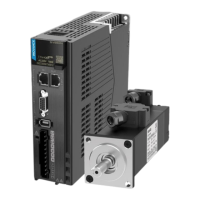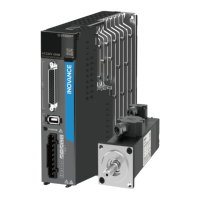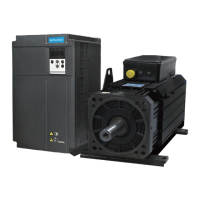9
INOVANCE TECHNOLGY EUROPE GmbH
SV660N Startup Procedure_EN_v1.4_20220826.docx
6.6.6.1 BODE PLOT
The Bode diagram is a representation of a system in the frequency range. The Bode diagram consists of a graph
for the amplitude (gain response) and a graph for the phase shift (phase response). It describes the stationary
reaction of the system to a harmonic excitation (sinus oscillation). The frequency is displayed logarithmically on
the X-axes.
To determine the frequency response of a system, the following procedure is carried out. A sinusoidal signal of
a certain amplitude and frequency is applied to the input of the system. As the frequency of the input signal is
increased, it is compared with the output signal. At first the output is aligned in amplitude and frequency with
the input, but when increasing the input frequency, without increasing the amplitude, the output signal has a
different amplitude and phase.
In an ideal system the output follows the input in amplitude and phase. In other words, the gain is 0dB and the
phase is 0
o
. But in a real application there is a specific frequency where the output signal cannot follow the
input signal and is increased by the amplitude and the phase shift.
6.6.6.2 AXIS BANDWIDTH
With the “Speed close loop” bode diagram you can determine the bandwidth of the system. Bandwidth is
related to the response of the system. The higher the bandwidth, the better the response and the higher the
control loop gain can be set. This result in high dynamics.
The bandwidth in the Bode plot is determined by the point at which the gain plot crosses -3dB or the phase
reach -90 degrees.

